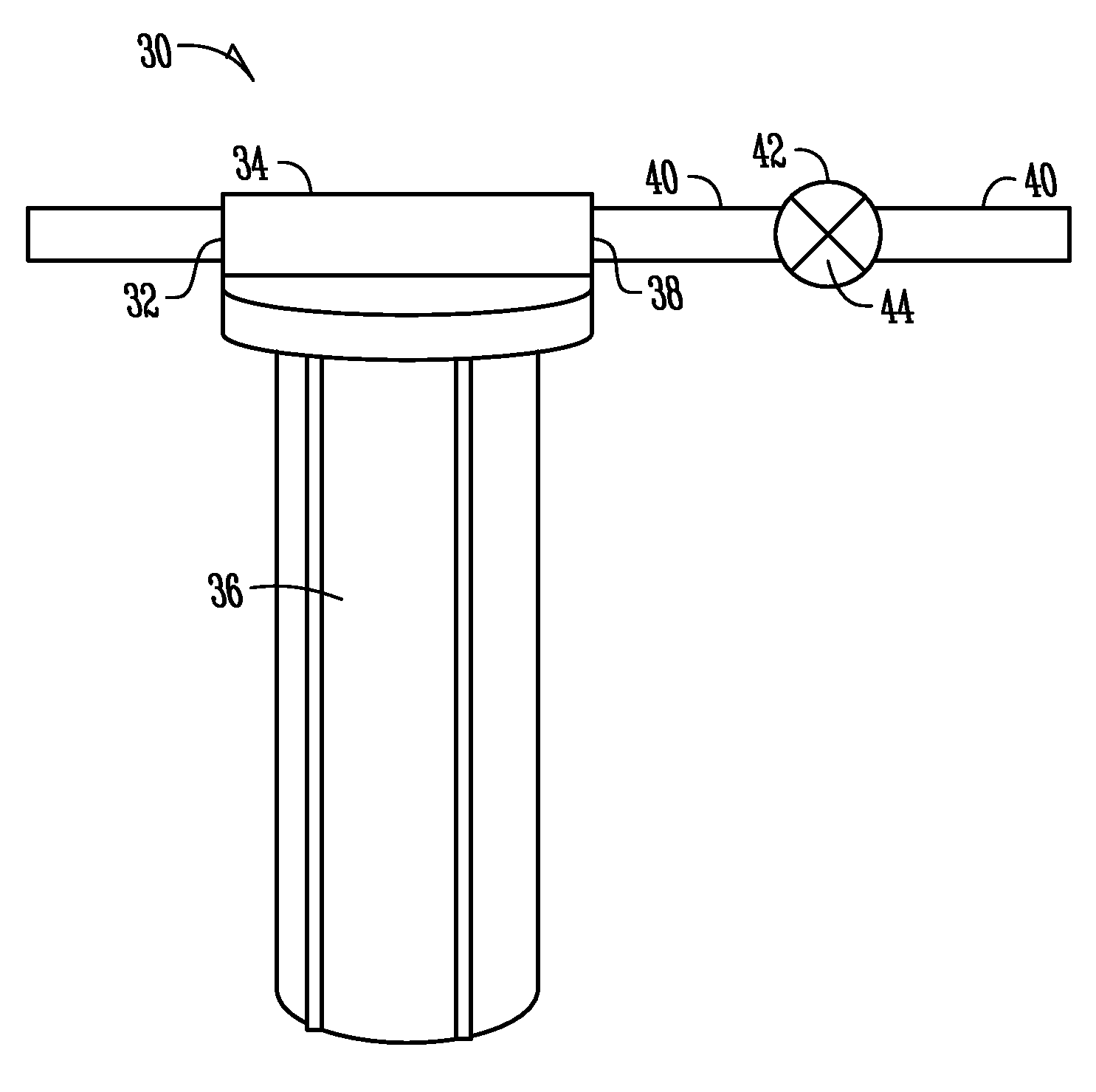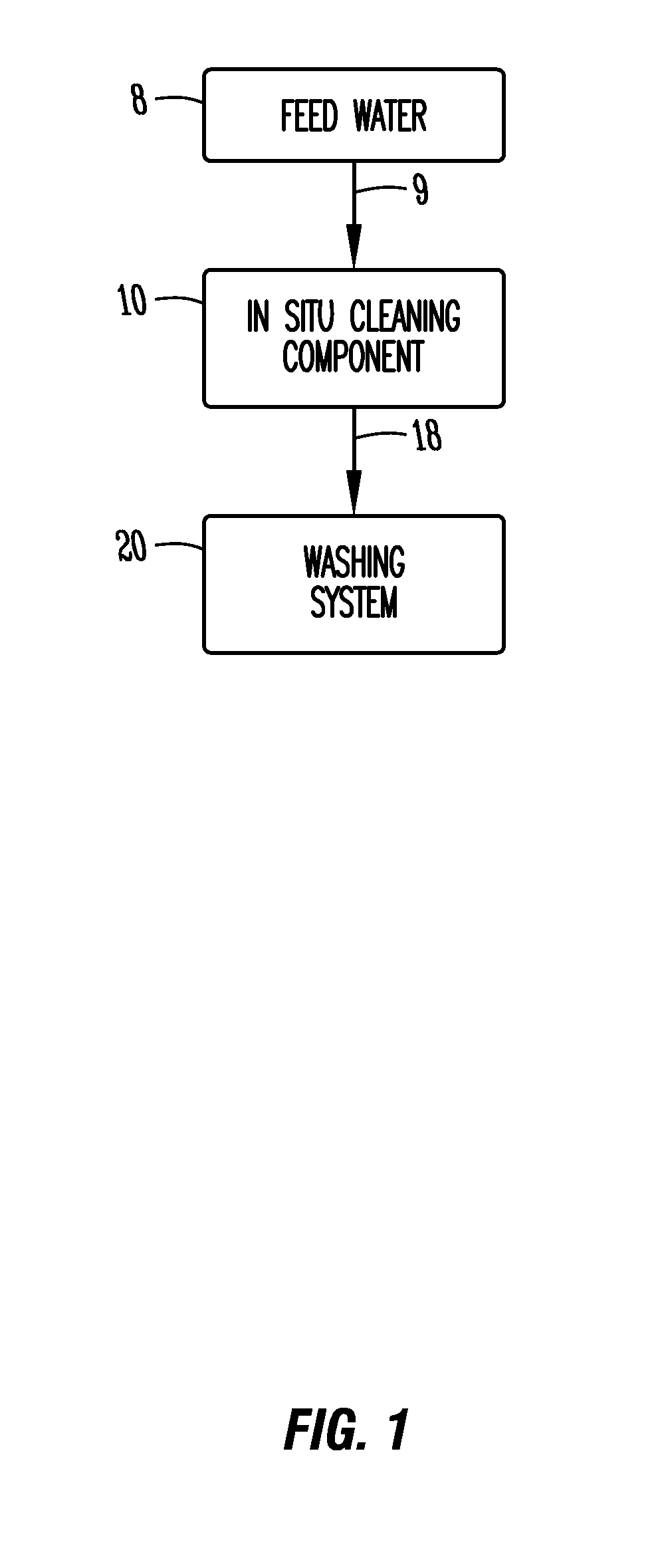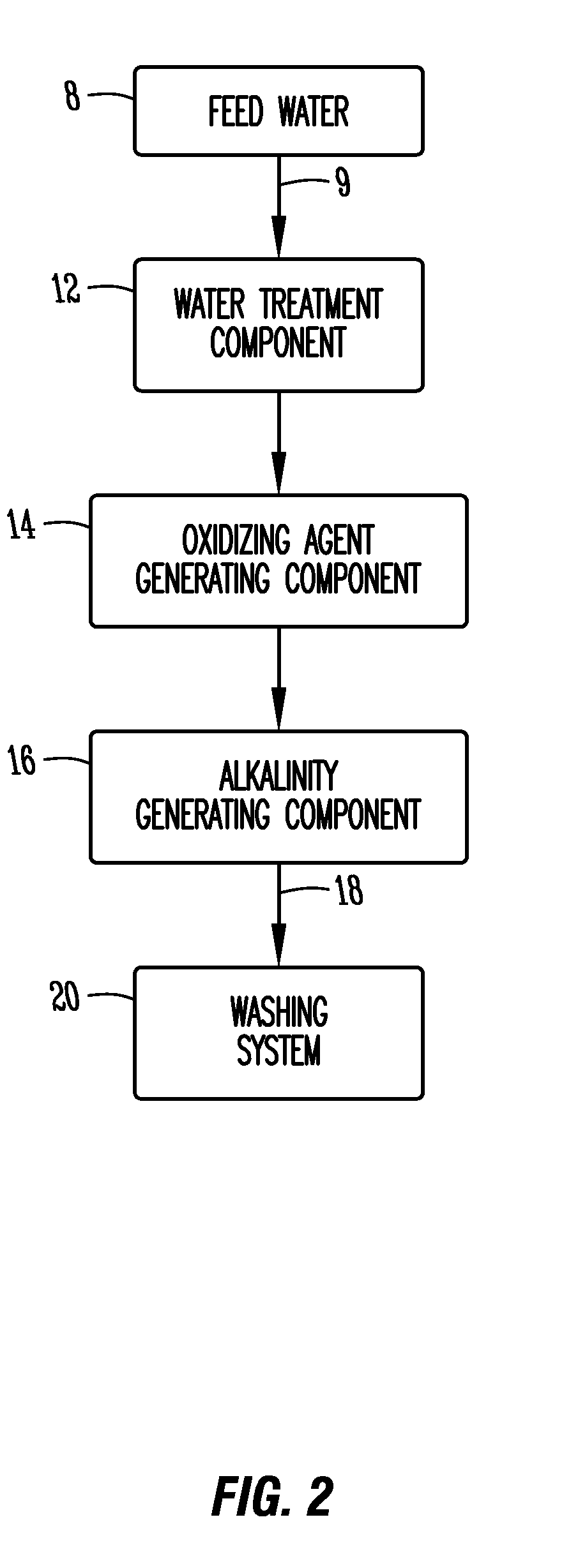In-situ cleaning system
- Summary
- Abstract
- Description
- Claims
- Application Information
AI Technical Summary
Benefits of technology
Problems solved by technology
Method used
Image
Examples
example 1
[0129]Water treatment component tested in warewashing process. A warewashing test was completed on drinking glasses using a tank comprising a conversion agent (magnesium oxide and no calcite). A Hobart AM-14 automatic warewashing machine was used with a 17 Grain water source. The magnesium oxide treated water was supplied before the sump in the machine, thereby also having an effect during the rinse cycle. No detergent or rinse aid was applied to the glasses. As a control, a glass was washed for 100 cycles with untreated water. After 100 cycles the glasses were evaluated for spotting and filming, demonstrating that the glassware treated with water and a conversion agent had no filming or scaling, unlike the control glass which had substantial filming and spotting.
[0130]A conversion agent was also tested in a warewashing process using detergent formulations with and without a chelant or sequestrant. A water treatment system comprising a solid source of a conversion agent was attached...
example 2
[0134]Water treatment components tested on ware wash systems. A magnesium form of a weak acid cation exchange resin was produced: a weak acid cation resin, Lewatit S 8528 obtained from the Lanxess Company, was soaked is 500 grams of NaOH beads and 2500 ml of softened water for 24 hours. The pH was approximately 12-13. After soaking, the resin was then rinsed thoroughly with softened water three times until the pH of the rinse water was below 11. The resin was soaked in 2500 ml of softened water with 700 grams of MgCl2.6H2O for 4 days. The resin was thoroughly rinsed with softened water three times. The final pH of the rinse water was approximately 7.5-8.5.
[0135]Alternatively, the following process can be used to produce a magnesium form of a weak acid cation exchange resin: Lewatit S 8528 resin was soaked in a 60% magnesium hydroxide slurry for 4 days. The final pH of the rinse water was 11.0.
[0136]Two pounds of the magnesium treated resin was used to treat 17 gpg (grain per gallon)...
example 3
[0139]Water treatment components tested on ware wash systems. Magnesium treated resin, produced according to the method of Example 2, was used to treat 17 Grain water. The treated water was used in an automatic ware washing machine with a detergent to wash test glasses. The detergent was formulated with and without builder according to Table 1:
TABLE 1Detergent withDetergentbuilderwithout builderRaw Material(Approx. Wt. %)(Approx. Wt. %)Alkalinity Source10%10% Builders14%0.0% Surfactants 4%4%Soda Ash67%81% Solvent 2%2%Bleaching Agent 3%3%100.0% 100%
[0140]Glasses washed with the detergent without builder and without water treatment showed heavy scale. In comparison, glasses washed with the same detergent without builder and with water treated with magnesium bound resin, produced according to the method of Example 2, had less scale and looked better than the glasses washed in the untreated water. The results indicate that the use of the magnesium bound resin catalyst reduced the nee...
PUM
| Property | Measurement | Unit |
|---|---|---|
| Fraction | aaaaa | aaaaa |
| Fraction | aaaaa | aaaaa |
| Fraction | aaaaa | aaaaa |
Abstract
Description
Claims
Application Information
 Login to View More
Login to View More - R&D
- Intellectual Property
- Life Sciences
- Materials
- Tech Scout
- Unparalleled Data Quality
- Higher Quality Content
- 60% Fewer Hallucinations
Browse by: Latest US Patents, China's latest patents, Technical Efficacy Thesaurus, Application Domain, Technology Topic, Popular Technical Reports.
© 2025 PatSnap. All rights reserved.Legal|Privacy policy|Modern Slavery Act Transparency Statement|Sitemap|About US| Contact US: help@patsnap.com



